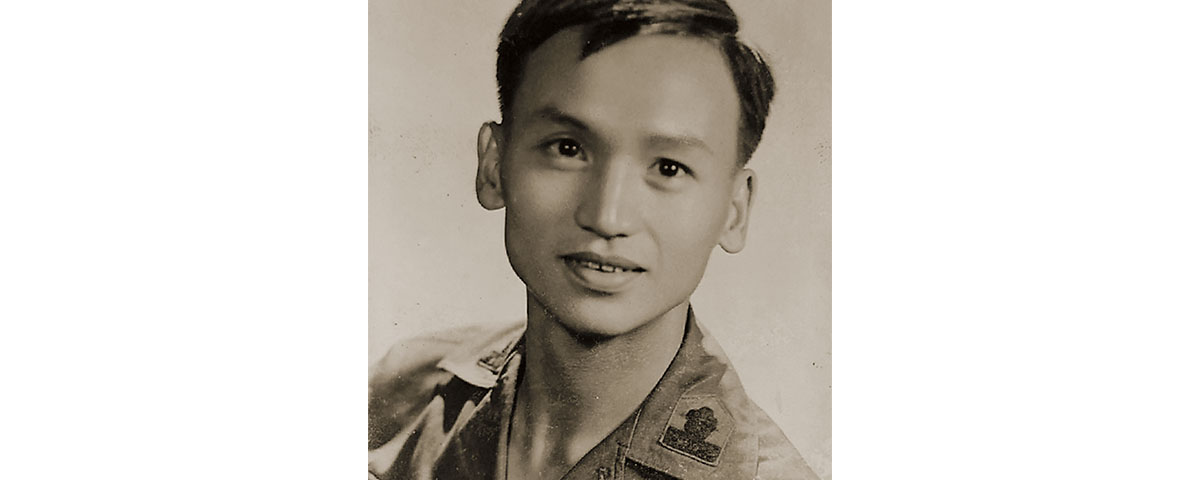Col. Cau Le was awarded in 1970 the Bao Quôc Huân Chương, the National Order of Vietnam
Col. Cau Le (or Le Cau in Vietnamese) was in almost continuous combat against the Viet Cong and North Vietnamese between 1963 and 1975. Le, who now lives in California, was decorated for bravery in combat 28 times, including awards of the U.S. Silver Star and Bronze Star Medal. He is one of the most highly decorated officers in South Vietnamese history.
Le was born in French Indochina in 1941 and graduated from South Vietnam’s West Point in Da Lat in 1963. He was assigned to the 23rd Infantry Division of the Army of the Republic of Vietnam, and his 12 years of soldiering included commands of a company, battalion and regiment. Not a large man—only 5 feet, 4 inches tall and 120 pounds—Le was a giant when it came to soldiering. A man of action, he always led from the front and was in the thick of the fighting.
In June 1969, Le was a major commanding 2nd Battalion, 47th Regiment, 22nd ARVN Division, when he led an attack against a strongly held Viet Cong position near Pleiku in South Vietnam’s Central Highlands. During a four-hour battle, Le continually exposed himself to intense mortar, machine gun and rocket-propelled grenade fire. For his heroism that day and other acts of combat gallantry while commanding the battalion, Le was awarded in 1970 the Bao Quôc Huân Chương, the National Order of Vietnam, the highest honor any Vietnamese citizen, soldier or civilian, could receive from the government.
The decoration, created in 1950 when France ruled Vietnam, was modeled after the French Legion of Honor and Colonial Order of the Dragon of Annam. It was awarded for great works, remarkable deeds in discharging assigned duties or bravery in battle. Most awards were posthumous. Like the Legion of Honor, the South Vietnamese award had five levels of recognition. As a junior officer, Le received the fifth level, designated as “knight” status. The higher classes of the award were reserved for the most senior officers and officials in South Vietnam. Le’s decoration, however, was presented with the Palm device on its ribbon, indicating “special courage” in combat.
Almost three years later, at the start of the communist Easter Offensive in 1972, Le was the executive officer of the 47th Regiment. The regiment’s 2nd Battalion, his previous command, had been severely mauled after weeks of combat and suffered from low morale. Now it was about to be overrun by North Vietnamese Army troops near the Central Highlands town of Dak To.
Le flew by helicopter to visit the unit and, after conferring with its leaders, arrived at a daring solution: Put all subordinate leaders and their soldiers in nearby bunkers and call in artillery fire on the surrounding enemy positions. As a result, the 2nd Battalion held its ground, forcing the NVA to bypass it. But Le’s success was bittersweet because communist forces overran both the regimental and division headquarters and killed their commanders. Lt. Gen. Ngo Du, commander of the ARVN II Corps (responsible for South Vietnam’s central region), radioed the major and informed him he was now a lieutenant colonel and commander of the 47th Regiment. Le was just 31 years old.
In June 1972, only two months after taking command of the regiment, Le and his men were providing security for a convoy traveling from the coastal city of Qui Nhon to Pleiku when they were ambushed by Viet Cong. Flying overhead in his helicopter command post, Le directed fire against the enemy. After the helicopter was riddled with bullets and crash-landed, Le continued to direct the attack until the enemy was driven off. For his gallantry, he received the Silver Star. He previously had been awarded the Bronze Star Medal with a “V” device for valor.
In March 1975, a month before the fall of Saigon, Le, by then a colonel, was captured by the Viet Cong. Knowing the VC would kill him if they identified him as an officer, Le took off his rank and told his captors that he was a sergeant. He spent the next 13 years as a prisoner of war in a communist re-education camp. Le was released in 1988 and moved to the United States.
—Fred L. Borch is a retired judge advocate colonel who now serves as the regimental historian for the Army Judge Advocate General’s Corps. He is the president of the Orders and Medals Society of America and the author of several books on American military decorations.





